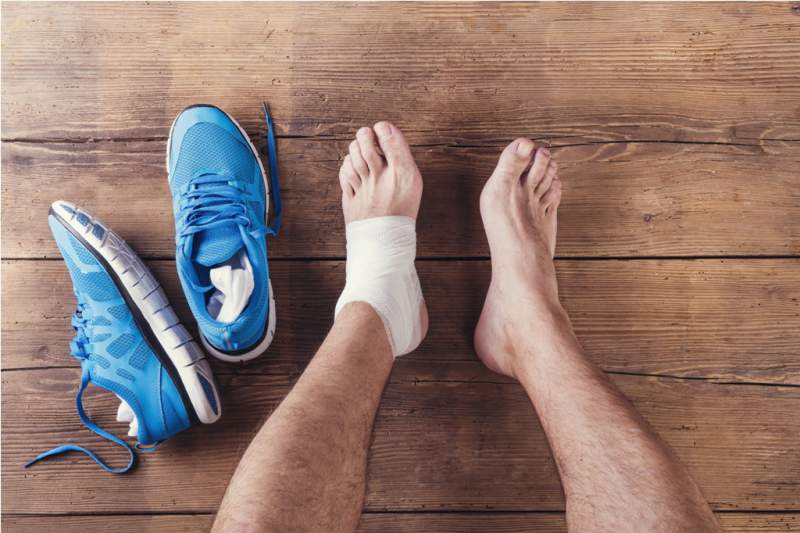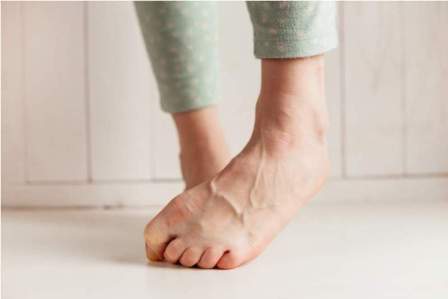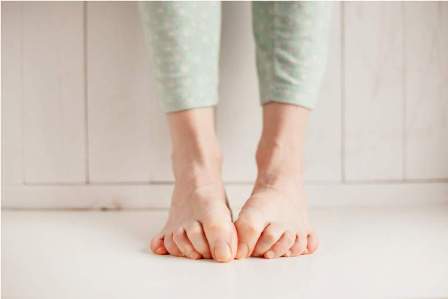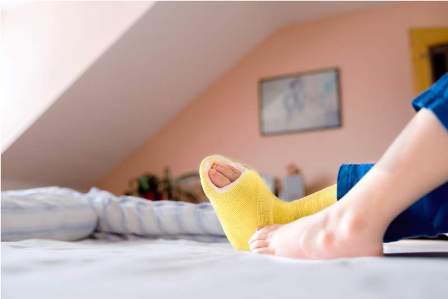In many kinds of sports, the ankle is one of the most common sites of lower extremity injury. Depending on the severity, some ankle injuries only require rest and over-the-counter pain relievers and most of the time they are neither dangerous nor life-threatening. They can sideline a workout routine, however, and temporarily affect your performance as an athlete.

More severe ankle injuries may need surgery and rehabilitation. You have to lay off putting weight on your injured ankle for a while by using a mobility aid. A knee scooter is a great device to help you rest your injured ankle without hindering your mobility. Just like a regular scooter, you propel your movement using your good leg while resting the knee of your injured limb on a well-cushioned knee scooter pad.
Research has shown that there are 5.23 ankle injuries in about 10,000 athletes with basketball players having the highest incidence rate. The training sessions and the game itself can put you at risk of an ankle injury. Fortunately, there are preventive measures you can take to lessen the likelihood of getting injured or avoid it entirely.
Most Common Types of Ankle Injuries
 Ankle sprain
Ankle sprain- Lateral malleolus fracture
- Achilles tendon rupture
- Syndesmosis injury
- Jones fracture
- Lateral process of the talus fracture
- Peroneal tendon subluxation
Risk Factors
 Age. Your joints become less flexible as you grow older which makes them prone to various types of injury
Age. Your joints become less flexible as you grow older which makes them prone to various types of injury- Lack of strength and stability in the ankle
- A history of ankle injury
- Poor ankle support
- Wearing inappropriate or worn-out footwear
- Rapid acceleration or deceleration in movement
- Inadequate warm-up and stretching prior to playing
How To Prevent Ankle Injuries
- Ensure that you are physically fit before playing. You’re setting yourself up for injury if you play any game with tense and weak muscles, and stiff tendons and joints.
- Gradually increase the duration and intensity of training or game. It should not go beyond an increment of 10% weekly to allow your body to adjust and facilitate the build-up of muscle strength.
- Incorporate exercises that improve your agility, balance, and flexibility in your training. Cross-training is also a good idea to avoid overuse injuries. In between games, you can hit the gym or jog around the neighborhood. The important thing is to prevent using the same muscle groups or joints for more than five days in a row.
- Allow adequate rest and recovery. Aside from sleeping at least eight hours a day, there should also be a 24-hour interval in between games and training sessions. This is to help your body recuperate before engaging in another strenuous activity.
 Warm-up and stretch before playing to loosen your tight muscles and joints.
Warm-up and stretch before playing to loosen your tight muscles and joints.- If you have a history of injured ankles, wear a tape, an ankle brace, or orthoses to support your joint adequately.
- Wear activity-appropriate footwear. This may be pretty basic but some people think they can get away with wearing basketball shoes for running and vice versa. Also, make sure the shoes haven’t lost their shape yet. Otherwise, you will need to buy a new one.
- Hydrate with water or sports drink before and after the activity. You should also replenish your lost fluids every 20-30 minutes while playing or training.
- When you feel pain, stop the activity immediately and assess your foot for any sign of swelling, discoloration, and deformity.
- Check the ground before playing and be extra careful if it’s uneven, rocky, or with loose gravel. If it’s an unfamiliar surrounding, watch out for holes or tree stumps. As much as possible, play or train on a good, even surface.
- Once injured, do not participate in a game unless you have fully recovered. You will need to undergo medical treatment, physiotherapy, and occupational therapy which can last for a few weeks or months. Don’t rush your recovery period because if you immediately go back without completing the recovery process, you increase the risk for re-injury.
Exercises to Strengthen Your Ankle
- S
 it on the floor and bend your knees. Cross one leg over the other and do a clockwise and counterclockwise movement with the top ankle. Do the same for the other leg. Repeat for 5-10 times on each side.
it on the floor and bend your knees. Cross one leg over the other and do a clockwise and counterclockwise movement with the top ankle. Do the same for the other leg. Repeat for 5-10 times on each side. - Stand with your feet one foot apart. Carefully lift your heels from the floor so you are now standing on your toes. Your ankles should be in a neutral position and hold for at least three seconds. If it’s too much, just try for one second and go back down. Repeat for 5-10 times as long as there’s no pain or discomfort.
- Stand on your right foot and slightly bend your right knee. Hold it for 10-20 seconds then repeat on the other side. You need to exert effort and control to maintain your balance and reduce shaking.
How to Manage Ankle Injuries at Home
 Stop the activity immediately. Rest and immobilize the injured ankle using a brace or an ankle splint to avoid injuring the ankle further.
Stop the activity immediately. Rest and immobilize the injured ankle using a brace or an ankle splint to avoid injuring the ankle further.- Apply a cold pack for 15 minutes at a time to numb the pain and decrease the swelling. You can use a cold water bottle or bags of frozen vegetables as alternatives if you don’t have a cold pack. Keep in mind that you shouldn’t apply them directly on the skin so you need to wrap them with a piece of cloth or a towel.
- Wrap the affected area using an elastic bandage. Don’t wrap it too tightly because it will impede the blood flow and don’t apply it too loosely because it will not provide adequate support and compression.
- Elevate the ankle above the level of your heart to prevent further swelling.
After doing the necessary first aid interventions, see your doctor right away. It is important to seek medical care as soon as possible even if you’re already starting to feel better. You may have to undergo radiological imaging studies to find out the exact nature of your ankle injury. The type and duration of the treatment process will depend on the extent and severity of the injury you sustained. Even though ankle injuries are generally not life-threatening, prompt treatment is still necessary to speed up the recovery process.

 Ankle sprain
Ankle sprain Age. Your joints become less flexible as you grow older which makes them prone to various types of injury
Age. Your joints become less flexible as you grow older which makes them prone to various types of injury Warm-up and stretch before playing to loosen your tight muscles and joints.
Warm-up and stretch before playing to loosen your tight muscles and joints. it on the floor and bend your knees. Cross one leg over the other and do a clockwise and counterclockwise movement with the top ankle. Do the same for the other leg. Repeat for 5-10 times on each side.
it on the floor and bend your knees. Cross one leg over the other and do a clockwise and counterclockwise movement with the top ankle. Do the same for the other leg. Repeat for 5-10 times on each side. Stop the activity immediately. Rest and immobilize the injured ankle using a brace or an ankle splint to avoid injuring the ankle further.
Stop the activity immediately. Rest and immobilize the injured ankle using a brace or an ankle splint to avoid injuring the ankle further.